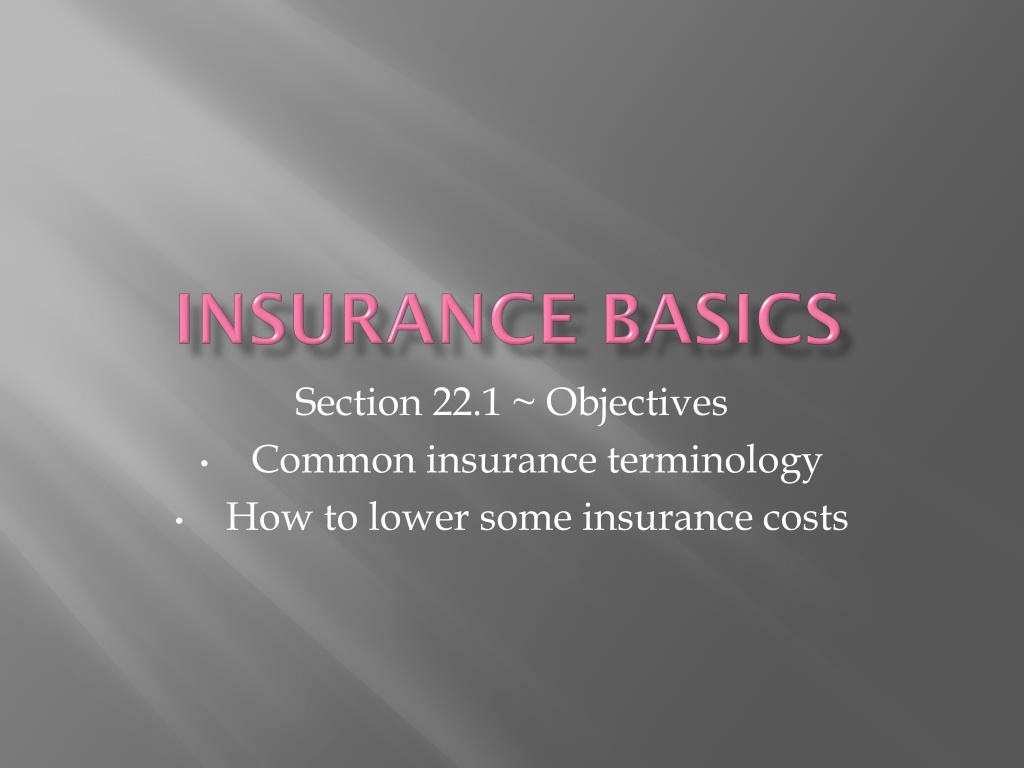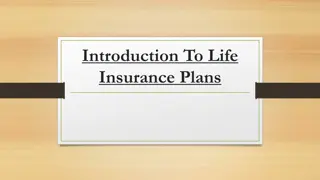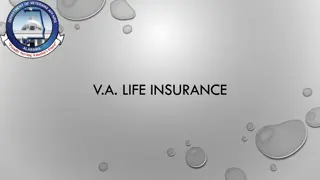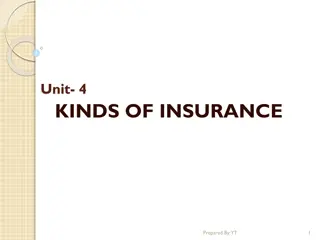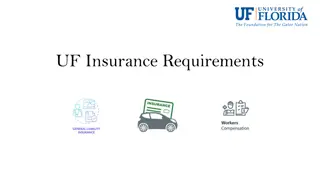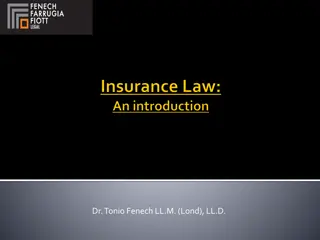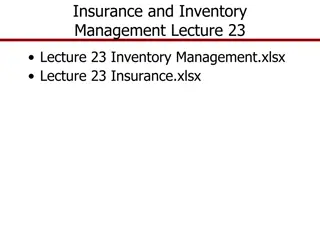Common Insurance Terminology for Lowering Costs
An insurance policy is a legal agreement between a policyholder and an insurance company, outlining coverage, benefits, premiums, deductibles, and exclusions. By understanding these terms, individuals can make informed decisions to potentially lower insurance costs, such as adjusting deductibles or exploring different types of insurance policies available for various needs.
Download Presentation

Please find below an Image/Link to download the presentation.
The content on the website is provided AS IS for your information and personal use only. It may not be sold, licensed, or shared on other websites without obtaining consent from the author.If you encounter any issues during the download, it is possible that the publisher has removed the file from their server.
You are allowed to download the files provided on this website for personal or commercial use, subject to the condition that they are used lawfully. All files are the property of their respective owners.
The content on the website is provided AS IS for your information and personal use only. It may not be sold, licensed, or shared on other websites without obtaining consent from the author.
E N D
Presentation Transcript
Section 22.1 ~ Objectives Common insurance terminology How to lower some insurance costs
An insurance policy is a legal contract between a person buying insurance (policyholder) and an insurance company. The buyer pays an agreed-upon amount of money to the ins. Co. The ins. Co. agrees to pay for losses caused by such events as automobile accidents, theft, or injuries.
An insurance Policy explains: Who is covered Types of losses for which the company will pay Amounts the company will pay The cost of the insurance
An insurance policy describes a policyholders coverage Coverage refers to losses that an insurance company agrees to cover The amount of coverage is the actual dollar amount that will be paid by the company in case of a loss Exclusions are losses that are not covered
An insurance benefit is the money paid by an insurance co. for a loss The beneficiary is the person, usually the policyholder, to whom the benefit is paid
A premium is the amount of money a policyholder pays for insurance They can usually be paid in installments or one time (usually a discount)
A deductible is the portion of the cost of a loss that an insurance policyholder pays before the insurance pays the remaining cost The higher the deductible, the lower the cost of your premiums
You can insure almost anything! Professional dancers and models have their legs insured . Jennifer Lopez has an insurance policy for her butt! 27 million
Automobile Insurance Health Insurance Dental Insurance Homeowner s Insurance Renter s Insurance Cell Phone List goes on ..
Include: Unemployment Workers compensation Medicare Medicaid
A few tips. Know the type you want/need Shop Around for coverage and costs Ask about different premium costs w/different deductibles Don t buy more coverage then you need, or less then you need
The craziness of it is Insurance companies are less willing to insure you if they believe you are more likely to use the insurance Young drivers & people with poor driving records pay high premiums (25) People with poor health habits have a hard time finding affordable insurance.
Objectives Why it s important to own home insurance The five types of Auto insurance What factors influence auto insurance premiums Basic knowledge of how insurance works, and why you need it, will help (and protect) you throughout your life
Renters insurance covers your belongings up to a set amount, minus your deductible Homeowners protects your house and its contents against losses due to fire and theft Supplemental insurance is usually needed to cover floods and earthquakes
Most states have laws requiring drivers to have insurance ~Types of Insurance~ The types of auto insurance coverage are: Liability Insurance Medical Payments Insurance Collision Insurance Comprehensive insurance Uninsured Motorist Coverage
Liability insurance is insurance that covers damages or injury for which you are responsible It covers damage to the other car but doesn t cover your injuries or damage to your car
Covers your medical expenses and the medical payments of your passengers Many policies will only cover up to $5,000 per per person
This covers the cost of repairs to your car that are the result from an accident It also covers damage to your car caused by an uninsured person
Insurance that covers damage to your car other than a collision; like theft, fire, or vandalism
Protects you against drivers who do not have liability insurance You may not need it if you have medical payments or health coverage
To limit delays and disagreements, some states have a no-fault system Under this system, policyholders have their claims paid by their own insurance company, no matter who is at fault
Ways to control or lower the cost of your auto insurance premiums are to: Shop around & get estimates from at least 3 companies Drive carefully; take advantage of safe-driver discounts (points add a surcharge for years) Take driver education classes Buy only the coverage you need Raise your deductibles Take advantage of insurance discounts
